Best Beginner Digital Pianos & Keyboards Guide- 2023
There are plenty of options available these days when it comes to beginner digital pianos and keyboards. You just need to identify the features that you would find desirable in a digital piano such as the number of keys, pedals, smartphone connectivity, and others.
We have reviewed the top 12 best beginner digital pianos available in the market. These have been studied carefully for the features that they offer. The replicability of acoustic piano feel has also been taken into consideration. Go through the review to make an informed decision.
Quick Summary: Best Beginner Digital Pianos 2023
Should a Beginner Go for a Keyboard or a Digital Piano?
If you cannot afford to spend several hundred to several thousand dollars on a piano, an electronic keyboard is a viable substitute for a beginner. When looking for an electronic piano, a variety of options are accessible in terms of price and size. Instead of being played like a typical piano, they are more often played as small synthesizers with a variety of instrument sounds and occasionally even premade rhythm tracks. A newbie will place the biggest importance on the keyboard’s features, such as the number of keys and whether or not they are weighted.
Utilizing a keyboard with 88 weighted keys will be very beneficial to a student. Weighted keyboards more faithfully simulate the feel of an acoustic piano, allowing students to practice and grow their hands while learning to play. Recreating the feel of an acoustic piano is accomplished. Contrary to traditional keyboards, electronic keyboards rarely include weighted keys.
If a keyboard with 88 weighted keys is still out of your price range, we advise getting one with at least 61 keys to make sure you can complete all of the workouts in our programs.
Which Should Be the Primary Keyboard for Beginners?
The wonderful online tools available to aspiring keyboardists and pianists explain the current surge in popularity of these instruments. Due to this, getting started with the game is now easier and cheaper than before. To do so, you will need a decent keyboard. When faced with so many options, it can be difficult to decide where to start or how to devote resources. Luckily, we’ve compiled a list of the best keyboards for beginners to help you get started.
If you or your child are considering learning the keys, you can choose from a wide variety of instruments, from simple piano-like devices to high-tech, fully-featured home keyboards. To set the record straight, we’ve selected what we believe to be the best keyboards for beginners, ones that are likely to inspire anyone to begin their musical journey.
If you’re only interested in our recommended items, you can skip down to the list below. Keep reading if you want additional information to assist you to choose the finest keyboard piano for beginners.
Which Should Be the Primary Digital Piano for Beginners?
In our opinion, two keyboards stand out as the finest for beginners. Here’s the Alesis Recital- 88 Key Piano Keyboard to get things started. Even though Alesis Recital doesn’t have as many extra features as some of the other home keyboards on the market, it more than makes up for it with its superb piano-like feel and sound. As for the price, it’s far lower than you’d probably imagine.
What Are the Primary Types of Digital Pianos Available?
There are a few key ways in which analog and digital pianos can be distinguished from one another. There are three primary varieties of digital pianos, and they are referred to as the stage piano, the conventional digital piano, and the upright digital piano. The case of an upright vertical piano is typically rather large, similar to the size of the case of a conventional upright piano. In order for a digital piano to be able to compete with a conventional upright piano, it often comes equipped with the most cutting-edge hammer action key mechanisms and tone-generating engines.
What Are the Types of Keyboards Available?
Every musical instrument has a rise to prominence and a fall to prominence. Similar to the electronic keyboard, which was created in the 1800s and peaked in the 1980s, Although there are various types, most of these keyboards seem relatively similar and are easily recognizable. Nowadays, there are so many different keyboards that choosing one can be difficult. There are numerous diverse brands within categories that are sold at numerous outlets, and there are numerous various sorts in total.
Keyboard for Dummies
Elementary school students are the main demographic for starter keyboards. Most entry-level keyboards come with a small library of digital instrument sounds and two to four octaves. The keys on a keyboard lack weight because they are made of plastic rather than ivory, unlike those on an actual acoustic piano.
Arranger
Starter keyboards’ basic design principles are abandoned in arranger keyboards. Almost every genre is represented in the pre-recorded backing tracks that arrangers have access to (indie rock, reggae, classic country, techno). Nowadays, solo performers who write music on the spot and aim to sound like a “one-man band” are all over arranger keyboards. A USB connector, chord recognition software, and a voice backup capability are typically included in an arranger’s equipment. The performance of the keyboardist can frequently be recorded and kept in a database.
Detailed Examination of the Digital Workplace
For composers who seek total creative control over every aspect of their piece, a workstation keyboard is excellent. Digital technology allows for the accurate recording and precise modification of data. The workstations’ equipment is more advanced than the arrangers’. Some workstation models probably come with synthesizers already integrated.
Synthesizer
To “synthesize” is to create something entirely from scratch or by modifying already existing components. People can generate false, digital sounds and effects with synthesizers. Despite having a similar appearance to a piano keyboard, a synthesizer has a fundamentally distinct function. Synthesizers enable artists to produce unique and intriguing sounds that are impossible to produce on a standard keyboard using either analog or digital signal processing.
Organ
The electronic pipes that have replaced the metal pipes on current organ keyboards are smaller and are designed to mimic the vintage organ sound. Some contemporary organ keyboard designs have attempted to preserve the well-known drawbars, pedal boards, and numerous key decks of their ancestors called manuals.
Hybrid
An arranger, digital workstation, synthesizer, organ, or piano are examples of instruments that can be combined to form a hybrid instrument. According to some, hybrids combine the best traits of different species. As a result, musicians who need a range of keyboard features no longer need to purchase multiple instruments.
Device for Piano Accompaniment
Digital pianos are the best electronic keyboards available. Despite their outward appearance, keyboards that resemble grand pianos don’t have any strings or hammers. This is why a digital piano won’t produce any acoustic tones. Instead, when buttons are pressed, digitized recordings are blasted over amplified speakers after being saved on computer chips inside.
Also check: Best Digital Pianos: Top 15 Pianos to Buy in 2023
Table of Contents
- Quick Summary: Best Beginner Digital Pianos 2023
- Should a Beginner Go for a Keyboard or a Digital Piano?
- Which Should Be the Primary Keyboard for Beginners?
- Which Should Be the Primary Digital Piano for Beginners?
- What Are the Primary Types of Digital Pianos Available?
- What Are the Types of Keyboards Available?
- Top 12 Best Keyboards & Digital Pianos for Beginners
- #1. Alesis Recital Portable Keyboard – Best Overall
- #2. Yamaha P45 Beginner Digital Piano – Runner Up
- #3. Yamaha PSR-EW300 SA Digital Piano – Editor’s Choice
- #4. Yamaha P71 – Best Beginner Digital Piano Under $500
- #5. Alesis Melody 61 MKII – Best Budget Beginner Digital Piano
- #6. Yamaha P125 – Best Beginner Weighted Digital Piano
- #7. Roland GO:PIANO (GO-88P) – Best Beginner Roland Keyboard
- #8. Kawai ES110 – Stage Piano for Beginners
- #9. Korg B2 – Best Beginner Keyboard from Korg
- #10. Casio Privia PX-S1000 – Best Casio Beginner Keyboard
- #11. Casio CDP-S150 Digital Piano – Great Choice Under $600
- #12. Yamaha YPT-260 – Best 61 Key Keyboard for Beginners
- What Should a Beginner Know Before Playing on a Digital Piano and a Keyboard?
- Is Digital Piano Easy to Learn Than a Keyboard?
- Difference Between Digital Piano and Keyboard
- Frequently Asked Questions (FAQs)
Top 12 Best Keyboards & Digital Pianos for Beginners
#1. Alesis Recital Portable Keyboard – Best Overall
| Features | Rating |
| Performance and sounds | 9.1 |
| Connectivity | 9.2 |
| Build Quality | 9.1 |
| For Beginners | 9.5 |
| Value for money | 9.3 |
Pros
- Adjustable features such as touch responsiveness
- Promises ultra-realistic playing experience
- Comes with numerous ports for input and output
- Attaching a sustain pedal offers the feel of an acoustic piano
- Full-sized keyboard
- Comes with a built-in metronome
Cons
- Is not entirely semi-weighted as being claimed
- Doesn’t come with a keyboard stand
Alesis Recital offers a perfect combination of incredible sound and premium feel. This digital piano features 88-weighted keys and promises an adjustable touch response. This keyboard features five built-in voices: Bass, Synth, Organ, Electric Piano and Acoustic Piano. You can customize the voices by layering them to form a rich tone.
Alesis Recital digital piano comes with a 20-watt powerful built-in speaker. It promises you an ultra-realistic playing experience. One of the best things about this keyboard is that it comes with a feature called the Lesson Mode. This divides the keys into two zones with the same voice and pitch. Both the teacher and student can play together in turns for easy learning.
A headphone output of 6.35mm allows you to practice in a private mode conveniently. It also comes with RCA outputs that allow connecting to an amplifier, mixer, recorder, or external sound system. You can connect this musical instrument to a PC/Mac using USB-MIDI.
This digital piano comes with an offer. You get three months of Skoove Premium free. Skoove is one of the easiest ways to learn the piano. You can take piano courses and improve your skills at your own pace. You can learn everything from classical music to current chart hits.
Key features
- 88-semi weighted keys
- Adjustable touch response
- Offers stellar sound and premium feel to the users
- Premium sounds 5 voices: Bass, Synth, Organ, Electric piano and Acoustic piano
- Features two built-in speakers
- Three-month Skoove subscription free
#2. Yamaha P45 Beginner Digital Piano – Runner Up
| Features | Rating |
| Performance and sounds | 9.5 |
| Easy to Assemble | 9.7 |
| Connectivity | 9.2 |
| Build Quality | 9.1 |
| Value for money | 9.5 |
Pros
- Simple and efficient single-button operation.
- Possible to change voices, play demo sources and configure metronome.
- Holds MIDI controls to play piano sample libraries on the PC.
Cons
- The keys could be a little noisy
- The speakers are not very impressive.
Though the Yamaha P45 doesn’t match the features of an acoustic piano, it features a range of dynamics of an acoustic piano such as touch-sensitive, exceptional sound responsiveness, etc., and it is a more consistent piano for intermediate and advanced level piano players. It does have a USB port at the back so that it connects with the computer. It also comes with a Yamaha PA150 power adapter that helps in plugging with the standard US outlet.
Its 88-fully weighted piano keys help to simulate the feel of an acoustic piano and offer an exceptional piano playing experience. Its GHS weighted action keyboard is heavier at the low end and is lighter at the higher end, similar to the acoustic piano. And this piano comprises ten different voices, which include the digitally sampled tones from the real Acoustic grand piano from Yamaha. The piano has a dual-mode, that allows combining two voices, such as the piano and the strings for an inspiring and new piano playing experience.
The GHS action offers an appropriate finger technique for exceptional performance on the acoustic piano and the matte finish on the black keys is less slippery even while playing for long hours. Its advanced wave memory sampling makes use of digital technology to record the sound of a grand acoustic piano.
Its AWM stereo sampling helps in creating richer, deeper, and spacious sounds by making use of pairs of waveforms to sample keys at different levels of timbre and volume.
Note: Yamaha P45 is also good for intermediates, hence it’s also listed in our list of best digital pianos for intermediate players.
#3. Yamaha PSR-EW300 SA Digital Piano – Editor’s Choice
| Features | Rating |
| Performance and sounds | 9.4 |
| Connectivity | 9.1 |
| Build Quality | 8.9 |
| For Beginners | 9.7 |
| Value for money | 9.6 |
Pros
- Play complex piano composition easily with a 76-note keyboard
- Comes with a comprehensive library of 574 instrument voices
- Play any musical genre with much ease
- The real-time band backing tracks depending on the chord that you play
- Convenient jacks and ports: USB, AUX-In stereo mini-jack, sustain pedal jack and headphone jack
Cons
- The power cord is short
- Comes with no instruction manual for the users
This touch-sensitive keyboard is renowned for the impeccable quality that it promises to its users. This 76-note keyboard with its touch-sensitivity and powerful sound systems makes a versatile digital piano. You can play more complex pieces owing to the wide 76-note touch sensitivity.
Yamaha PSR-EW300 comes with a comprehensive library of 574 instrument voices. This will let you enjoy playing any musical genre. 165 auto-accompaniment styles ensure real-time bank backing tracks depending on the chords you play. This digital piano comes with a power adapter and an X-style stand.
The touch sensitivity enables you to play the keys heavily with louder tones. You can play softly for quieter tones. The touch sensitivity accurately reflects every nuance of your playing. You also have the option to connect a portable music player with this musical instrument.
Yamaha is popular worldwide for offering quality and premium musical instruments. The sound of this digital piano is of high quality and is also very detailed. The best thing is that this piano comes with a free downloadable songbook. This provides tips for onboard lessons and comes with built-in songs.
Key features
- The bundle consists of the keyboard, a stand, and a PA130 power supply
- 76-key portable keyboard
- Comes with 154 preset songs, 165 styles and 574 voices
- Practice present songs with Yamaha Education Suite (Y.E.S)
- Track the strength and velocity of keys with touch tutor lesson mode
- USB enables audio transfer and connectivity with MIDI through a single port
Check out:- List of Best Yamaha Digital Pianos 2023
#4. Yamaha P71 – Best Beginner Digital Piano Under $500
| Features | Rating |
| Performance and sounds | 9.5 |
| Connectivity | 9.1 |
| Build Quality | 9.1 |
| For Beginners | 9.7 |
| Value for money | 9.6 |
Pros
- Quality piano playing experience
- Stylish and slim design
- Full-size keyboard
- 4 levels of touch sensitivity
- Graded hammer standard key weight system
Cons
- No built-in recording feature
- The headphone jack is present at the rear end
The Yamaha P71 is an exclusive model that has been designed for learning and rehearsing. This is a full-sized piano keyboard that features fully-weighted keys. This digital piano promises realistic sound and feel possible from a modest piano.
P71 comes with a headphone jack, a sustain jack, and a USB port. You can link it to an amplifier. It is easier to integrated keyboard sounds with any music software. Despite not having MIDI, it can get the job done through its USB port.
This digital piano is lightweight and compact. It has a depth of fewer than 12 inches and consumes little space. It weighs just 25 lbs. despite the built-in sound system. This makes it quite easier to move it around your home.
This digital piano has an authentic touch of Yamaha GHS. It has a lighter touch in the high end and heavier touch in the low end. It provides a great touch to any aspiring pianist. It helps you build proper finger technique while practicing.
Yamaha P71 promises a simple operation with just a button. You just need to hold the Grand Piano/Function button and choose the keys for playing the demo, configuring the metronome, and changing voices.
This piano is powered by Yamaha’s classic sound engine. Advanced Wave Memory sampling ensures richer, deeper, and spacious sound.
Key features
- Amazon-exclusive model
- Comes with a sustain pedal and a power adapter
- 88-fully weighted keys offer the feel of an acoustic piano
- Comprises of 10 different voices including digitally sampled tones from acoustic grand pianos from Yamaha
- Dual-mode permits you to combine two voices together
- Consumes less space and easy to move around
Check out: Best Budget Digital Pianos Under $500
#5. Alesis Melody 61 MKII – Best Budget Beginner Digital Piano
| Features | Rating |
| Performance and sounds | 9.1 |
| Connectivity | 8.9 |
| Build Quality | 8.9 |
| For Beginners | 9.4 |
| Value for money | 9.1 |
Pros
- 61 full-size keys are perfect for practicing
- Can be played in dual keyboard mode
- Record and playback functions
- Easy to assemble the keyboard
- Is portable
- Comes with a microphone
- Free Skoove Premium subscription for a period of three months
Cons
- The sound quality isn’t great
- No USB connectivity
This digital piano comes with 61 piano-style keys, 300 built-in rhythms, easy to assemble stand, headphones and a bench. The adjustable height setting makes this keyboard quite convenient to use. The best thing about the headphone offered along with this keyboard is that it can mute the speakers automatically so that the user can practice in private mode.
It is pretty easy to set up Alesis Melody 61 MKII portable keyboard. This digital piano comes with all the accessories that you need for playing a professional keyboard. The ability to record, 300 built-in tones and a lot more features make this an ultimate digital keyboard for beginners.
The best thing is that Alesis Melody includes 3-months of Skoove Premium free subscription. Skoove lets you learn to play a digital piano in the easiest way possible. The experienced team of musicians offers assistance to the learners whenever needed. They also share tips and tricks for improving skills while practicing.
Key features
- 61 responsive piano keys
- Built-in speakers for easy practicing and performing
- Split modes and 300 built-in tones
- 40 demo songs
- Comes with an assemble sand, headphones, music rest, adjustable height settings, power adapter, and a microphone
Check out: Best Cheap Portable Keyboard Pianos Under $150
#6. Yamaha P125 – Best Beginner Weighted Digital Piano
Pros
- 192-note polyphony
- USB Audio interface
- Incredible sound quality system
- Consists of a built-in library with 50 songs and 20 versatile
Cons
- No Bluetooth connectivity
- Keys don’t feel great
The simplicity of Yamaha P125 is what makes it a user-friendly and most approachable digital piano. It is a great option for intermediate players and beginners. It has the perfect touch and tone. It is a portable piano and hence easy to move around.
This digital piano is compact and is an 88-key weighted digital piano. It features a minimalist design and is also user-friendly. It gives the feel of an acoustic piano and produces high-quality and dynamic sound. The touch response is incredible and the design is sleek and slim.
If you are looking for authentic piano playing performance, then you can rely on Yamaha P125 digital piano. This Graded Hammer Standard (GHS) piano has a lighter touch in the high end and heavier touch in the low end. It feels similar to an acoustic piano.
The newly improved two-way speaker system produces expansive piano sound in both directions. This promises a rich stereo sound. You can link this digital piano with the Smart Pianist App. You can control it by connecting with a smartphone or tab. Overall, despite the design of this piano being sophisticated, it is quite simple to use.
Key features
- Fully weighted digital piano with 88 keys
- GHS weighted action offers the feel of an acoustic piano
- CF sound engine produces the sound of the famous Yamaha concert grand piano
- Split mode lets you layer different voices
- USB ensures connectivity with MIDI
Note: Yamaha P125 also features in our list of best sounding digital pianos.
#7. Roland GO:PIANO (GO-88P) – Best Beginner Roland Keyboard
| Features | Rating |
| Performance and sounds | 9.5 |
| Connectivity | 9.2 |
| Build Quality | 9.1 |
| For Beginners | 9.5 |
| Value for money | 9.4 |
Pros
- Connects with the smartphone wirelessly to access online content and to learn faster.
- Compact and space-saving design with ambient playing options
- Helps with playing music on the go, as it connects with a smartphone wirelessly.
- Offers responsive digital piano sounds.
Cons
- The music sounds weak and hollow and doesn’t match the digital piano.
If you are looking for a complete digital piano in a portable design, then this is the idle keyboard for you. This is a portable digital keyboard with speakers and helps with a premium piano playing experience and exceptional performance. This piano is loaded with a bundle of features to play and record music. But we found that despite its excellent features, it is still cost-effective and can be a great stage instrument.

This piano from Roland has an 88-note keyboard with full-size keys and 128-voice polyphony piano tones. You can simply play out any tune on this digital piano and as it possesses Bluetooth speakers and could connect wirelessly with the smartphone, you don’t have to worry about anything, when you have its company on stage. For an exceptional stage show, it does come with a music rest, a sustain pedal, and a power adapter.
Its compact and lightweight nature, allows you to carry it to your piano classes and the stage shows and it can also play completely wireless with batteries and connectivity with Bluetooth. It also supports MIDI so that we can learn advanced music lessons from the music libraries that are available on our tablets or smartphones. In short, this piano behaves as a simple and compact music solution for all piano enthusiasts.
#8. Kawai ES110 – Stage Piano for Beginners
| Features | Rating |
| Performance and sounds | 9.4 |
| Connectivity | 9.1 |
| Build Quality | 9.1 |
| For Beginners | 9.3 |
| Value for money | 9.4 |
Pros
- The piano offers wonderful piano sound similar to the concert grand sound.
- Good key action for the price of the piano.
- Lightweight and portable piano that doesn’t weigh much.
Cons
- The key action of this piano is a little noisy.
- The speakers are a little muddy at the low end.
When we tried the 88-key weighted action keyboard from Kawai, we found that it sounds as close to an actual grand piano. Though there are many such exceptional pianos from renowned brands, the ES110 is the best of them all and is available at a cost under $1000. The sound of this piano is pretty much lifelike and feels very close to the pianist.
This piano can be of great value for serious students and it can help them to practice on a graded weighted keyboard and the ES110 serves as an exceptional transition from a large grand piano, that almost offers the same feel.

The sounds of this piano are close to the actual grand piano and players can half-pedal easily rendering accurate sounds and we can say that not many $1000 keyboards have this tremendous functionality for their cost. Other features of this piano are its good action, fast response, and high-quality sounds. Though it doesn’t have a USB port, its MIDI standard port comes in handy and the sounds of its other instruments and voices are great too.
The built-in speakers of this piano are great and with headphones and an external sound system, this piano is second to none. The matte keys of this piano have some grip, and the sounds of its keys are both sweet and classical and have a metallic sound with responsive hammer action, similar to the grand pianos. And despite such exceptional features, this piano from Kawai is competitively priced and is compact and lightweight as well.
Check out: Best Digital Pianos Under $700
#9. Korg B2 – Best Beginner Keyboard from Korg
Pros
- The piano has 88-weighted keys that feel solid and relatively quiet
- Its 2 x 15W speakers sound great for the piano at this price
- The piano comes with a decent looking pedal
- Features tremendous audio in and out ports
- Can receive audio input and output midi simultaneously through the USB connection.
Cons
- The keys are of glossy plastic material and not simulated with ivory
- The controls are not intuitive.
This is a fantastic digital piano that will be appreciated by any musician, and even non-professional players will love to play this piano as it is simple and easy to play. The piano renders many different piano sounds and is just diverse enough to help the pianist play any style of music. This digital piano is highly recommended and is great for those who want to use an acoustic piano shell with a low profile and a clean design.
We loved its sound, though it could have been a bit better and the keys feel awesome and its speakers are very much loud as well. But it might be appropriate to keep the keys of the piano covered so that it is protected from dust. The build quality of this piano is exceptional and it is worth every single dollar. The different piano sounds in this piano are diverse to find the best piano that one can find for requiring the piano to play any style of music.
The 88-weighted keys of this piano feel extremely solid and are quiet and its speakers sound exceptionally great for any classic piano of this choice. The piano features a decent pedal, which is far better than the models that come with a footswitch. The piano comprises audio in and out ports and the output midi is capable of receiving audio input at the same time through its USB connection. This is indeed a great feature that allows third-party samples in the piano sounds.
Read the complete review here: Korg B2 Review 2023: Does it Plays Like a Real Piano?
#10. Casio Privia PX-S1000 – Best Casio Beginner Keyboard
Pros
- Slim design piano that weighs less than 25 pounds.
- The piano has been designed to work with the Chordana Play app that is compatible with the iOS and Android apps.
- Compact and lightweight pianos that replicate the sounds of grand pianos
- Its touch sensor controls are easy to see and use in any light.
Cons
- The seat of this piano is not height adjustable.
This is an exceptional digital piano from Casio that renders stunning piano tones with damper and string resonance along with 17 other tones and its smart scaled hammer action keyboard comprises simulated ivory and ebony key textures. The keyboard features an elegant and beautifully polished top panel design along with illuminated touch sensor controls. The piano also features Bluetooth audio for helping the pianist play their favorite songs on the go.
The piano comes with a complete set of accessories such as an adjustable stand, sustain pedal, bench, piano lessons, instructional DVD and book, and a polishing cloth for cleaning. Thus, everything that is required for playing comes as a complete bundle with this piano.
The Privia digital piano helps in redefining the digital piano playing experience and comes with unprecedented sound quality and piano playing experience. Its grand piano sounds and its tri-sensor 88 note scaled hammer action keyboard is versatile enough for the studio, home, and stage.
This piano renders exceptional piano tones with string resonance and damper resonance along with 17 other piano tones. Its powerful stereo speaker couples with headphones and ¼” audio outputs and its class-compliant USB ports don’t require drivers and complex installation.
Read the complete review here: Casio PX-S1000 Review 2023
#11. Casio CDP-S150 Digital Piano – Great Choice Under $600
| Features | Rating |
| Performance and sounds | 9.3 |
| Connectivity | 9.1 |
| Build Quality | 8.9 |
| For Beginners | 9.5 |
| Value for money | 9.4 |
Pros
- A realistic and portable instrument that is very comfortable to play
- Perfect piano for hobbyists and students.
- The piano is capable of running on AA batteries as well.
Cons
- There is no headphone jack
- The piano sounds can be quite shallow, especially at the lower notes.
This is an excellent digital piano that comes with an adjusting stand and bench, sustain pedal, and almost all the accessories that help us to play piano right out of the box. There is an easy transpose feature is use and the piano features the same standard size piano keys. When you order this piano online, the entire piano stuff comes in one heavy box and you might require assistance in assembling the parts of the piano. The instruction manual also suggests two people assembling the piano.
This piano has fully weighted 88 keys and it has more than 700 tones. It also has several useful features and it takes a lot of time to learn them all completely. This can be an excellent piano for students who are learning piano lessons, as it has many useful features to help them master the piano lessons. The weight of the keys is also great for beginners and its pre-programmed features are great for the learning needs of piano students.
Casio has decreased the size of the action mechanism of its keyboards, which stimulates the weight of the hammers in the grand piano that renders a realistic piano touch and playing experience.
The players can choose between ten tones that include the tones of the grand piano and come with a chorus and reverb sound as well. As it is built-in with a stereo speaker system it helps with self-practicing for learners.
Check out: Best Home Digital Pianos 2023
#12. Yamaha YPT-260 – Best 61 Key Keyboard for Beginners
| Features | Rating |
| Performance and sounds | 9.6 |
| Connectivity | 8.9 |
| Build Quality | 8.8 |
| For Beginners | 9.7 |
| Value for money | 9.5 |
Pros
- Nine-step lesson function with Yamaha Education Suite
- Comes with a free downloadable songbook
- Comes with hundreds of accompaniment styles and sounds
- Easy to plug in and play
- Record and playback using the recording function
Cons
- Doesn’t offer the same feel as an acoustic piano
- No-touch sensitivity
Yamaha-260 portable keyboard has been designed for entry-level players. It is a great option for aspiring musicians and is also user-friendly. It offers advanced functionalities to the users. This model comes with Yamaha Education Suite that gives step by step instructions to the players.
The keyboard buttons are well made. Some of them come with rubber coating. This offers them protection from debris and dust. The keys are quite responsive but don’t give you the feel of high-end keyboards.
Yamaha YPT-260 comes with 400 voices or digital instruments that are mapped to the keys. This enables the player to create any kind of music that they like. When it comes to the style, 130 accompaniments are included in the YPT-260 model.
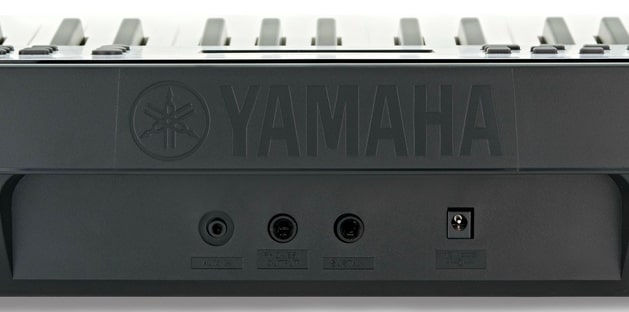
This keyboard comes with a song bank that comprises 112 songs. The songs include compositions from Mozart to Beethoven. It also includes newer tracks. The keyboard has the ability to pair with a variety of devices including computers, tablets, and phones. You can also integrate it with any professional recording software on your Mac/PC.
Key features
- The 61-key portable keyboard comes with a power supply, a padded collapsible bench, and a keyboard stand
- 112 onboard songs, 130 styles with backing tracks, and 400 voices
- Yamaha Education suite with lesson functions
- Aux input allows playing music from a computer, tablet, or a phone
- Comes with a song bank
Check out: Best Digital Pianos for Learning in 2023
This ends our list of best beginner keyboards & digital pianos. In case you have any queries regarding these beginner piano models or want a specific model to be reviewed, you can contact the expert team via comments.
What Should a Beginner Know Before Playing on a Digital Piano and a Keyboard?
First, the piano is an acoustic instrument with many strings, like a guitar or other stringed instruments, which means it needs to be tuned and maintained regularly. Electric keyboards are low-maintenance alternatives to their acoustic counterparts, requiring only the occasional dusting and the installation of software updates.
Pianos and keyboards are versatile instruments that can play a wide variety of musical genres. However, an acoustic piano’s lack of built-in technology, pre-programmed sounds, and transposing functions makes it more challenging to play styles other than classical compositions. Indeed, you have to be a genius to come up with something funky or productive outside of the bounds of classical music when playing on a regular piano.
Compared to keyboards, acoustic pianos take up a lot more room and are consequently far less convenient for transport. The portability of a keyboard makes it ideal for performers who need to travel with their instruments. A 61-key or 88-key piano keyboard would take up no less than ten times as much room as a standard piano. When viewed in this light, it’s simple to see why keyboards are the go-to choice for so many.
Is Digital Piano Easy to Learn Than a Keyboard?
For beginners or players on a limited budget who are looking for a realistic playing experience, there is no substitute for the sound and feel of a digital piano. This is especially true for those who are seeking an authentic playing experience. Beginners and younger musicians who seek portability or don’t have the space for a grand instrument may find that keyboards are a better option than full-size pianos for their instrument of choice.
Difference Between Digital Piano and Keyboard
True to their namesake, digital pianos aim to mimic the look, touch, and tone of traditional pianos. While digital keyboards may have more tonal options, they rarely replicate the look or feel of an acoustic piano.
These are the key distinctions between them:
Amount of Keys
The standard number of keys on an acoustic piano is 88, and this is the same number you may expect to see on a digital piano. Although 61 or 76 keys are more prevalent, 88-key digital keyboards do exist. The keys can be smaller on occasion as well.
Feel
The keys on a digital piano will typically be weighted to simulate the touch of an acoustic instrument. Similar to an acoustic piano, Yamaha’s digital pianos (including the Clavinova, Arius, Portable P-Series, and DGX-Series models) include graded weightings, with the “action” being heavier in the bass notes and softer in the treble notes. Piano-like tactile feel is achieved by using keys made of wood or synthetic ivory and ebony.
Aspects of Sound Quantity and Quality
The piano sounds on digital pianos are often of higher quality than those on standard digital keyboards. The realism of these pianos is due in large part to the fact that the recordings (“samples”) of acoustic pianos they have in their memory span a wide range of key positions and volume levels. Many modern digital pianos also include capabilities that bring the acoustic piano experience to the next level. In the case of some Yamaha Clavinova models, for instance, Virtual Resonance Modeling (VRM) is used to recreate the characteristic reverberation produced by the body of a concert grand piano when it resonates in response to the notes being played.
Cost, Convenience, and Portability
Digital pianos, on the other hand, are typically much bulkier and heavier than portable digital keyboards. Some digital pianos (like Yamaha’s Clavinova and Arius models) are housed in cases that look like traditional pianos, and their primary function is to be played in a single location. However, there are digital pianos that are both portable and genuine in sound and touch, such as the Yamaha P-Series or DGX Series.
Frequently Asked Questions (FAQs)
1. What Function Do the Pedals Serve?
The left soft pedal on grands and uprights is used in different ways. To make it simpler to play softer, the soft pedal on any upright or vertical piano including spinets, consoles, studio uprights, and big uprights will move an internal bar that brings all the hammers closer to the strings. This can be viewed by raising the lid of the piano and peering inside as you press the keys. The soft pedal on a grand piano moves the entire action, keys and all, to the right by a small amount, reducing the number of strings the hammers strike from three to two (two in the bass, and one if you go low enough). Because you’re striking those two (or one) strings with a different section of the hammer, the sound is muted and the tone is altered slightly. See the entire keyboard move up and down as you press the soft pedal on a grand piano.
The middle pedal, which was designed for and is called the sostenuto pedal, records only the notes that are being held by the fingers. The practice pedal is for console and upright pianos with a felt muting strip. Some verticals only have two pedals, while others feature a true sostenuto mechanism. Older uprights and consoles often have a bass sustain pedal in the middle, which functions like the right pedal but only affects the bass register, or a third pedal that is simply attached to the left pedal lever and operates the mechanism that brings the hammers closer to the strings.
The right pedal is always the damper pedal, as it is used to lift the piano’s dampers. Dampers are the felt wedges that are pressed down on the strings to muffle the instrument’s sound; when a key is depressed, its corresponding damper is raised to allow the tone to continue, but when the pedal is depressed, all of the dampers are raised at once, releasing all of the strings at once. As you press the pedal, take a glance inside the piano and observe the dampers.
2. When You Play the Piano, How Does the Sound Come About?
When a player depresses a key, the action inside the piano causes the hammer to rise (in a grand) or move forward (in an upright) to strike the strings. The hammer is shaped like a round stick and has a head at the end; the head is covered in a thick layer of wool felt and resembles a real hammer. The string is attached to a massive soundboard, which makes the melodic sound produced by the string’s vibrations much louder than the string alone could produce. The sound is muffled by a damper, a felt pad that falls back against the string when the key is released. When the right foot pedal is depressed, all the dampers are raised, allowing the strings to continue to play.
3. Can You Always Trust a Piano From a “Good Manufacturer?”
Once again, not always. Some pianos are more highly regarded than others in the same line, whether they are from the manufacturer’s past or present offerings. Production values may also shift if ownership of a company changes hands. Mason & Hamlin, for instance, was formerly considered one of the world’s greatest pianos due to its beautiful singing tone and action that was comparable to that of Steinway. After the Great Depression of the 1930s, however, it was acquired by a different company, which produced a product with the same old name but considerably less acclaim. Falcone Co. of Haverhill, Massachusetts later revitalized M& H, and the brand was once again manufactured with integrity until going out of business. Restored M&H piano production to the original blueprints and standards has been resumed by PianoDisc. Like so many other things, most well-known piano brands were developed by corporations rather than their namesake families.
4. Is There a Purpose to the Piano’s 88 Keys?
The harpsichord’s inventor, Bartolomeo Cristofori (try saying that 10 times fast!), had the brilliant idea of equipping a harpsichord with hammers (to HIT the strings) rather than plectra, and so the piano was born (to PLUCK the strings). As a result, the piano was created sometime around the year 1700, or possibly even earlier. In any case, once composers started using the new instrument, they wrote increasingly intricate and wonderful music for it. It wasn’t long until we needed to make room on either side of the keyboard. It started with 84 notes (up to the letter A) and by the middle of the 19th century had 85. The Bösendorfer Imperial Concert Grand, one of today’s pianos, has 96 keys, and its lowest bass note, C, may be played on a piano with a keyboard. It has a length of 9.5 feet and a mass of over 1 tonne.
5. Exactly What is a Grand Piano?
One would expect 88 keys on a piano with a full-sized keyboard. In comparison to the keys on an acoustic piano, the ones on a keyboard or other non-acoustic pianos may be shorter in length or narrower in breadth. The implications for your training and performances are enormous. If you hope to one day play an advanced repertoire, a full-size keyboard piano is a need. Pianists, however, as a group, are aware that the size of individual keys on various pianos and keyboards might vary, and therefore they are required to study their repertoire to the point that this variation does not negatively impact their performance.


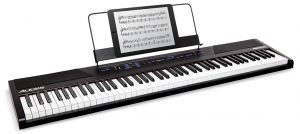
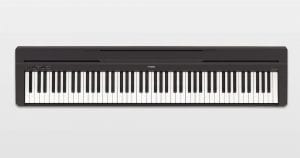
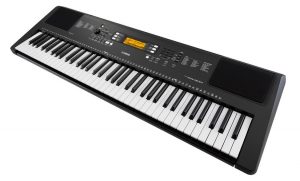
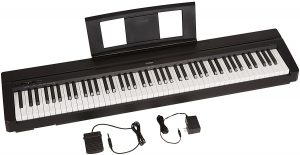
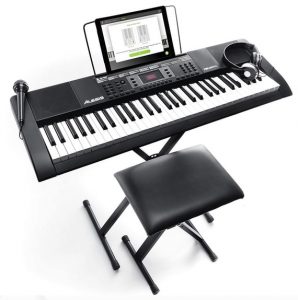

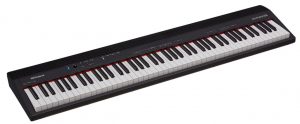
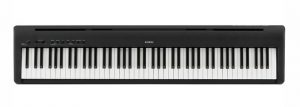
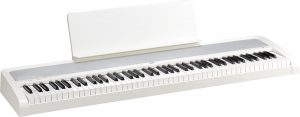
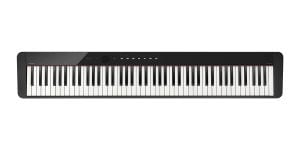
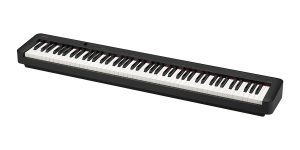
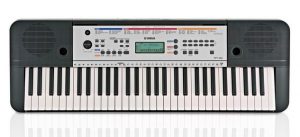
After reading your list of best beginner digital piano reviews, I am considering Yamaha P71 as it seems to be the best option for me as I have a long way to go. I have joined piano classes, but I think a piano at my place will always help me grow as a musician quicker.